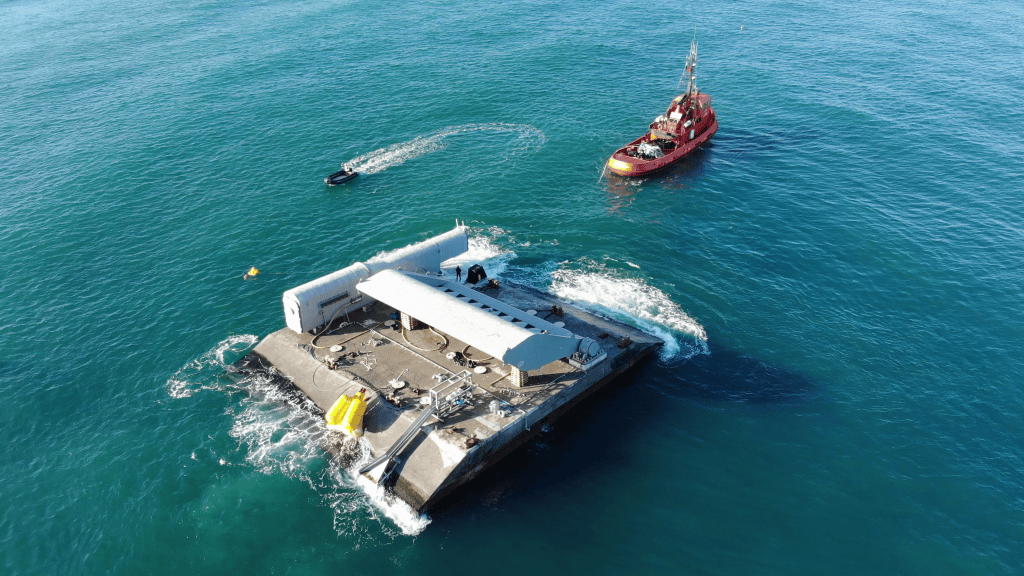Portugal's WaveRoller and the Future of Wave Energy
When we think of renewable energy, our minds often drift to the sunlight bathing solar panels or the wind powering turbines. But what if we could tap into the raw, rhythmic power of the ocean waves? Portugal is leading the way in this very endeavor with WaveRoller—a groundbreaking project that seeks to harness the untamed power of the ocean to create a sustainable future. Let’s explore how Portugal is making waves in the renewable energy scene with this innovative technology.
What is WaveRoller?
The WaveRoller is an innovative wave energy converter developed by Finnish company AW-Energy, in partnership with Portugal. The technology aims to capture the energy of ocean waves to generate electricity, providing a reliable, renewable source of power that complements other green technologies like solar and wind.
WaveRoller is designed to operate underwater, anchored to the ocean floor. Essentially, it consists of a large metal panel that moves back and forth with the motion of the waves, converting the kinetic energy into electrical energy. Unlike other forms of ocean energy like tidal or offshore wind, WaveRoller captures energy from the surge of waves, leveraging the ocean’s consistent natural movements.
Why Portugal?
Portugal has long been known for its bold renewable energy ambitions, and the Atlantic Ocean provides the perfect setting for WaveRoller. The Portuguese coastline is blessed with powerful and consistent waves, making it an ideal testing ground for wave energy technologies. The government has been highly supportive of renewable energy projects, offering incentives and infrastructure that make it a pioneer in green innovation.
WaveRoller was installed near Peniche, a coastal town known for its strong ocean waves, and has been generating electricity in pilot phases since 2019. The project is part of Portugal’s broader renewable energy strategy, aiming to tap into the country’s natural marine resources to reduce carbon emissions and increase energy independence.
How Does WaveRoller Work?
The WaveRoller unit is deployed on the seabed at a depth of 8-20 meters, where the back-and-forth surge of the waves creates pressure on the submerged panel. As the waves pass, the panel moves, and this movement is transferred to a hydraulic system that drives a generator, producing electricity. The energy generated is then transferred to the grid onshore, where it powers homes and businesses.
One of the biggest advantages of WaveRoller is its reliability. Unlike solar and wind energy, which are subject to weather variations, ocean waves tend to be much more consistent, providing a steady source of energy throughout the year. This makes WaveRoller a valuable component in a diversified renewable energy portfolio.
Making Waves: The Impact of WaveRoller
WaveRoller has the potential to be a game-changer in renewable energy. It is capable of providing baseload power, meaning it can continuously generate electricity at a steady rate, unlike the intermittent nature of solar and wind. The pilot installation in Peniche has already demonstrated its capability to generate enough electricity to power hundreds of homes, and as the technology scales up, its impact is expected to grow significantly.
Another key benefit of WaveRoller is its low environmental impact. Being installed on the seabed, it has minimal visual impact and is designed to coexist with marine life. In fact, studies conducted around the Peniche installation have shown that marine species continue to thrive around the units, making it a truly eco-friendly energy source.
A Step Toward a Blue Future
The success of WaveRoller speaks to the broader potential of wave energy as part of the Blue Economy—an approach that looks at sustainably utilizing ocean resources for economic growth, improved livelihoods, and ocean health. Portugal, with its strong renewable energy goals and ideal marine conditions, is leading the charge in showing that wave energy can be a viable part of our future energy mix.
WaveRoller is part of a broader ambition to make ocean energy a key player in the fight against climate change. If scaled and deployed across coastlines worldwide, wave energy could supply a substantial amount of the world’s power needs, providing clean, renewable energy that is available day and night.
Looking to the Horizon
The WaveRoller project represents a hopeful step toward a cleaner, more sustainable energy future. As we look to reduce our carbon emissions and tackle climate change, projects like WaveRoller are a beacon of innovation—proof that we can find new and creative ways to harness the natural forces around us.
Portugal’s leadership in wave energy is an exciting glimpse of what could be a major player in the renewable energy landscape. The ocean’s waves are always moving, and with technologies like WaveRoller, we may just be able to ride that wave into a greener, more sustainable future.
